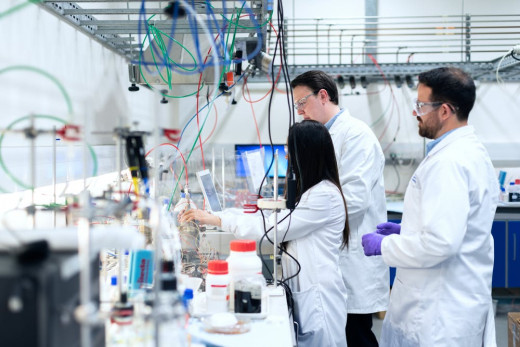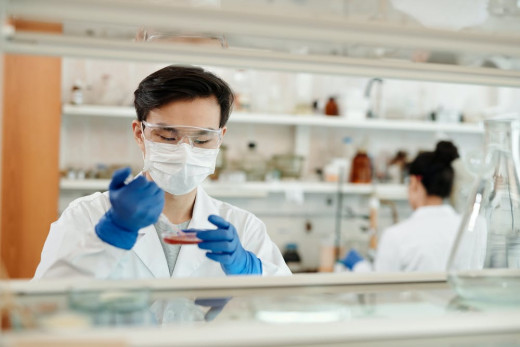Covid-19 Antibody Tests Done in Gangelt, Germany Are Changing the World's View on Mortality Rates

What Happened in Gangelt ?
Spectator.us reports Gangelt, Germany, to be the first site to randomly sample 1,000 people to determine correct percentages of people infected by the coronavirus. With this information, Gangelt will then be able to calculate reliable mortality rates. The results were astonishing.
Out of 1,000 people tested, 2% were infected by a coronavirus, while another 14% had already recovered from the virus.
By stripping out overlapping data, the final numbers showed 15% of the 1,000 people had the coronavirus in one form or another, while 85% already recovered. Both figures were much higher than previously thought, showing how quickly the coronavirus could spread in little time.

Why Does This Testing Matter ?
Technologyreview states, "Here's why the true infection rate in a region matters... Eventually, when enough people are immune—maybe half ... the virus won't be able to spread further, a concept called herd immunity".
And by randomly testing 1,000 people, scientists are finally able to get a better handle of what this virus is capable of and its real effects on people. Surprisingly, a large number of people were infected and already recovered, and never knew they had the coronavirus. Because they showed no signs of the virus, they had no reason to see a doctor. These are the 'unknown cases' that are currently missing in any calculation and critical to determining reliable mortality rates.
John Hopkins University maintains mortality rates for cities around the world. Before this study, John Hopkins believed Gangelt's mortality rate to be at 2%. When 'unknown cases' were included in the calculation, the mortality rate dropped to .37%, which was 75% lower than was previously thought.
What's equally impressive is the Gangelt mortality rates are consistent with the Diamond Princess Cruise Ship numbers of January 20th, 2020.

Reverse Engineering the Data
By taking the percentages from Gangelt and reverse-engineering the data, we can project how many people have the coronavirus.
When we take coronavirus deaths up to 04/16/2020 as tracked by Worldometers and apply the .37% mortality rate and 85% recovery rate from the Gangelt study, we project the following :
- In the United States, 28,554 have died from the coronavirus. The percentages project 7.7 million people currently have the virus, of which 6.5 million already recovered.
- In Italy, 21,645 have died from the coronavirus. The percentages project 5.8 million currently have the virus, of which 4.9 million already recovered.
- In Spain, 19,130 have died from the coronavirus. The percentages project 5.1 million currently have the virus, of which 4.3 million already recovered.
- Worldwide, 135,662 have died from the coronavirus. The percentages project over 45 million people currently has the virus, of which 38 million have already recovered.
More studies like this are needed to validate these percentages. Still, these initial calculations demonstrate how reverse engineering can become a powerful tool now and in the future in projecting coronavirus metrics.

More Research Sites On the Way
Telluride, Colorado, and Wake Forest, North Carolina, are next up to do random testing, with results targeted for next week. More test sites are on the way.
Abbott Laboratories plans to test 20 million Americans completing the study by early June. This considerable sample size will allow the world to have better insight into the future directions and decisions needed as it relates to the coronavirus.
DW reports that Germany has recommended "Coronavirus Antibody Tests and Immunity Certificates," for people who tested positive for the coronavirus antibodies and recovered.
These certificates would give people who recovered from the coronavirus a clean bill of health, allowing them to go back to work and travel. Italy is also looking into the idea of Immunity Certificates, as is the United States.

Final Thoughts
This antibody testing clearly shows the importance of identifying recovered people who never saw a doctor. It also demonstrates the need for significantly more random testing to determine reliable mortality rates.
Once these percentages are officially established and certified correct, then with the use of reverse engineering, the world will have a much better understanding of the coronavirus impact and its metrics.
The Gangelt Study also showed that calculating mortality rates by only using 'known deaths' divided by 'known cases' will dramatically overstate mortality rates.
Finally, Gangelt's random test study shows the importance of accurate data, which better serves the world in making informed decisions addressing the coronavirus.
This content is accurate and true to the best of the author’s knowledge and is not meant to substitute for formal and individualized advice from a qualified professional.



